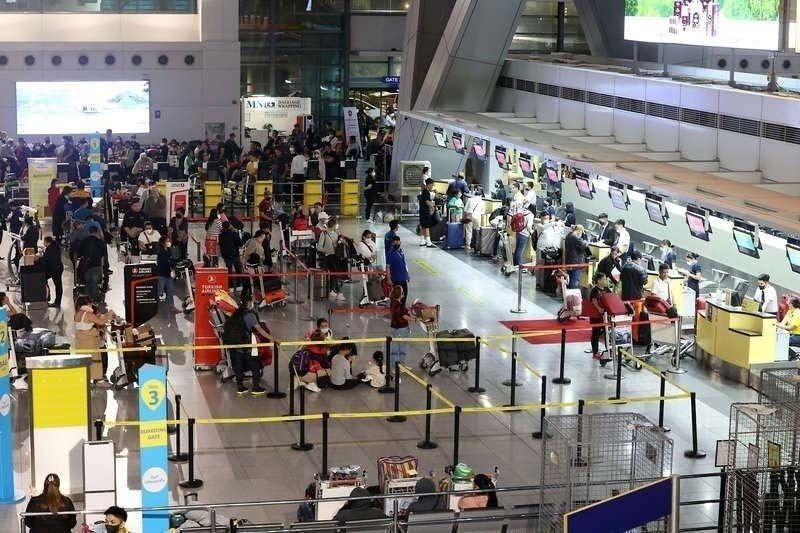Notes on the beat: Behind the scenes in the NAIA bidding
MANILA, Philippines — It may have been the fastest privatization of a big-ticket government asset, but it certainly was far from being seamless. The privatization of the Ninoy Aquino International Airport (NAIA), the primary gateway to the Philippines, looked flawless on the surface, with the process completed in around 12 months, but observers, insiders and […]


MANILA, Philippines — It may have been the fastest privatization of a big-ticket government asset, but it certainly was far from being seamless.
The privatization of the Ninoy Aquino International Airport (NAIA), the primary gateway to the Philippines, looked flawless on the surface, with the process completed in around 12 months, but observers, insiders and the bidders know it was quite a turbulent flight.
Or to put it more bluntly, it was a dogfight on the inside – among tycoons and between local and foreign bidders.
At the end of it, the consortium led by San Miguel Corp. (SMC), the country’s diversified conglomerate led by tycoon Ramon S. Ang or RSA, bagged the 15-year concession to operate and maintain one of the worst airports in the world.
SMC SAP & Co. Consortium submitted the highest proposal of revenue share to the government at 82.16 percent, tipping the scale in its favor in the end. GMR Airports Consortium offered 33.3 percent while the Manila International Airport Consortium (MIAC) pitched 25.91 percent.
For the Department of Transportation headed by former airline boss Jaime Bautista, the equation was simple: the DOTr would choose whoever committed to share the largest revenue with the government from NAIA operations, excluding passenger fees.
And the math is as clear as day: 82.16 percent beats 33.3 percent and 25.91 percent, giving SMC SAP & Co. Consortium a landslide win.
Solicited versus unsolicited
Prior to this, however, the push to privatize NAIA started in a back-and-forth tussle between the DOTr and MIAC, as the group of local conglomerates and their foreign partner made an initial attempt to win the project through an unsolicited offer worth P100 billion filed on April 27, 2023.
Bautista was quick to inform the media a day later that the proposal had to be examined, making it clear there and then that his team would be difficult to please.
On record, Bautista said unsolicited proposals like MIAC’s are welcome, but gave no assurance that these would be approved. He also noted that the DOTr expected other proposals to be submitted, in a first of many hints that the agency would conduct solicited bidding.
The events that came after can be compared to the airport itself – chaotic, noisy and messy.
On June 19, 2023, MIAC gathered members of the press in a hotel in Makati City to present the details of its unsolicited proposal.
There, MIAC said the concession for NAIA should last 25 years, countering the DOTr in its plan to limit the period to 15 years, only extendable by 10 years depending on the performance of the concessionaire.
Red-tagged, green-tagged, yellow-tagged
Hours after the briefing, a document found its way to us reporters covering the transportation beat with our names highlighted in either red, green or yellow: red insinuated being critical of MIAC and its proposed unsolicited route, green meant somewhat friendly and yellow meant somewhere in between.
Who did the tagging? We don’t know for sure, but we could only laugh in disbelief at the labels assigned to us because all we did was to follow the story as accurately as we could.
Notably, reporters who were tagged red wrote the Infrawatch PH statement calling for a solicited bidding of NAIA.
A month after the MIAC briefing in Makati City, the government announced that it would, indeed, open the bidding for all, junking the unsolicited offer in the process.
Just as you thought a solicited bidding would quash any and all tension, rival bidders dragged each other to the bottom of the pit.
To recall, there were four participants who were able to meet the tight deadline of the submission of bids, which was Dec. 27, 2023, namely, SMC SAP & Co. Consortium, GMR Airports Consortium, MIAC and Asian Airports Consortium.
One of these four parties wrote to Transportation Undersecretary Timothy John Batan on Jan. 19, 2024, asking him, as chairman of the Pre-Qualification Bids and Awards Committee (PBAC), to disqualify its three other rivals.
It was a 200-page manifestation, which read in part “we respectfully request that the PBAC reconsider the decision to rate as qualified [these following groups], and instead declare these three bidders as disqualified to bid for the project…”
The DOTr did not reveal to the media the identity of the group which sought to disqualify its three other rivals but sources said that it was not the winning consortium.
There was also an issue with one bidder whose foreign partner was said to have engaged in monopolistic activities in the past, for which it was slapped a fine of more than $400,000.
There were also questions on the background of SMC SAP & Co. Consortium’s other members namely RMN Asian Logistics Inc. and RLW Aviation Development Inc. which were formed just days before the opening of bids.
‘NAIA Bidding Exposed’
On Feb. 1, 2024, select members of the press received an anonymous two-page email with the subject: “EXCLUSIVE: NAIA REHAB BIDDING EXPOSED.”
The email contained the issues raised against the SMC-led consortium.
Its sender was “[email protected],” an email address which — just like the issue it was trying to flag — seemed like a newly created email address created for the purpose of leaking the document.
At the announcement of the contract winner last week, Bautista said he was informed that RMN and RLW will participate in the consortium as investors.
In the end, SMC SAP & Co. Consortium appeared to have addressed the issue against it after showing documents that Sy-led BDO was backing its bid with a P120-billion financing support.
In spite of this, financial researcher CreditSights cautioned against the two consortium members, saying that their “background and capabilities were unclear.”
As for the Asian Airports Consortium, led by tycoon Lucio Co and businessman Jefferson Cheng, it remains unclear why it failed to pass the technical evaluation of the DOTr but sources said the reasons for the disqualification were not insignificant, unlike say, the typo error of SMC way back in the 2014 bidding of the Cavite Laguna Expressway which was discovered when the bids were opened on a Friday the 13th.
At the time, SMC was disqualified because its bid security had an expiration of Nov. 25 or short of the 180-day requirement by four days. It turned out to be a mere clerical error — supposedly Nov. 29 instead of Nov. 25.
Going back to the NAIA bidding, some of the participating groups said that it was really a tremendous challenge complying with all the stringent requirements of the PBAC.
In any case, the Asian Airports Consortium, in their bid, offered a revenue share of 76 percent, the closest to the SMC offer.
It seems the group decided not to file an appeal. Aside from the required protest fee of P850 million, its bid, anyway, was only second to the SMC-led consortium.
In the end, two days after Valentine’s Day, a day supposedly dedicated to lovestruck lovers, the government gave its yes to NAIA’s most aggressive suitor, tycoon RSA.
All’s fair in love and war, they say, and the bidders — like bachelors competing for the woman of their dreams — did what they’re supposed to do.
As exhausting as the procedure was leading to the award of the concession, this was only the first step toward rehabilitating the infrastructure. The real work is just starting.














